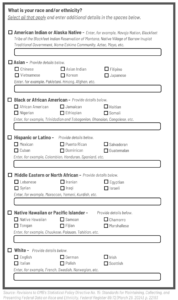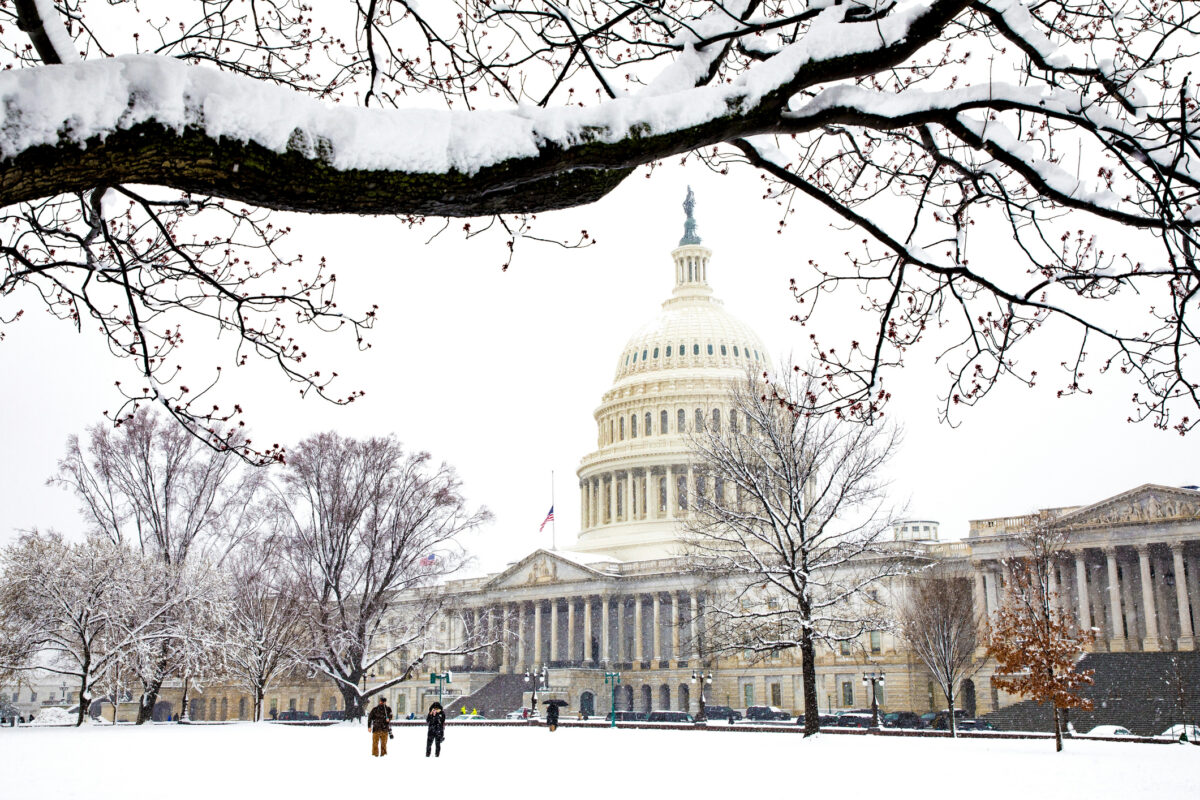Updates to Decades-Old Federal Standards for Race, Ethnicity Data Will Change How Students are Counted
Published Jul 23, 2024
Higher education leaders, institutions, and systems need data that are accurate, accessible, and disaggregated by race and ethnicity in ways that reflect the increasing diversity of today’s students. Such data is crucial for identifying areas of need, allocating resources effectively, and developing targeted programs that support students from all backgrounds, especially students from historically underrepresented backgrounds and those whose racial and ethnic identities have been historically undercounted in federal data sets.
In March 2024, the Office of Management and Budget (OMB), a federal agency overseeing government data collection, released revisions to Statistical Policy Directive No. 15: Standards for Maintaining, Collecting, and Presenting Federal Data on Race and Ethnicity (SPD 15). All federal information collections that include data on race and ethnicity must adhere to these new standards. These changes, informed by extensive public engagement, aim to modernize and standardize race and ethnicity data collections to improve uniformity and comparability across federal data sets and their usefulness for equity-driven policymaking.
OMB’s Interagency Technical Working Group on Race and Ethnicity Standards relied on direct public engagement, listening sessions, virtual town halls, and a tribal consultation to inform its final recommendations to OMB. The new standards introduce several key changes:
- Combined Race and Ethnicity Question: Data on race and ethnicity are now combined into one question, rather than asking about Hispanic or Latino ethnicity separate from race. Federal data collections must treat the categories equally and respondents are encouraged to select all options that reflect their identity.
- Added Middle Eastern or North African (MENA) Category: MENA must now be treated as a minimum reporting category, recognizing a previously underreported racial and ethnic group. Previously, MENA was included under the definition of White.
- Detailed Data Collection: Federal agencies will now be required to collect more detailed breakdowns within racial and ethnic groups. For example, Asian students can share their specific ancestry (e.g. Filipino, Chinese, Vietnamese). Individuals who identify as “American Indian or Alaska Native” can also write in their Tribal affiliation. Federal agencies can request an exception to this requirement if the potential benefit of the detailed data would not justify the additional burden or privacy risks.
- Updated Definitions: The standards include changes to terminology and definitions, including the definitions of “Hispanic or Latino” and “American Indian or Alaska Native.” These changes modernize and add consistency to how specific groups are described and better clarify how each minimum category is defined.
Figure 1 illustrates how these questions might be posed in federal data collections like sample surveys, the Census, or the Free Application for Federal Student Aid (FAFSA). The bold text indicates the minimum reporting categories.
Figure 1: Example of New Race and Ethnicity Questions with Detailed Categories
Federal agencies have 18 months after the publication of these standards to develop and publish action plans outlining their implementation strategy. Full compliance across all data collections and publications is required by March 2029. Agencies are not required to wait until their action plans are complete before implementing the new guidance.
These changes will transform the way the U.S. Department of Education (ED) collects and reports data in the FAFSA, Integrated Postsecondary Education Data System (IPEDS), sample studies, and other collections. IHEP and the Postsecondary Data Collaborative have long advocated for greater disaggregation of higher education data. The shift to more detailed race and ethnicity categories has the potential to provide a more granular understanding of how different types of students are faring in higher education.
When policymakers have access to more detailed data, they can enact evidence-based policies that address inequities, like targeted interventions and student supports. Current data collection practices often mask these disparities.
For instance, the “Two or more races” category combines students from diverse racial identities, where a student who identifies as both “Black or African American” and “American Indian or Alaska Native” would not be counted in either category, but in the “Two or more races” category. When developing an action plan to implement the new standards, ED will have to decide how to present the racial and ethnic categories (e.g., whether to include all the detailed categories) and specifically, how to present data on multiracial and multiethnic students. OMB proposed two approaches for better counting of multiracial and multiethnic individuals, whether alone or in combination with another group.
The successful implementation of these standards hinges on a commitment to inclusivity and transparency. We encourage ED to seek input from the communities that will be impacted, including voices that have been historically excluded from policy-development efforts. As the leader of the Postsecondary Data Collaborative, IHEP will remain actively engaged in this process and uplift opportunities for robust field engagement. It is essential that these data accurately represent students’ identities so they can be used to develop evidence-based policies that promote equity in higher education.
Read Layers of Identity: Rethinking American Indian and Alaska Native Data Collection in Higher Education and “Everyone Deserves to be Seen:” Recommendations for Improved Federal Data on Asian Americans and Pacific Islanders (AAPI) for more information on how data on race and ethnicity can better reflect the diversity of students, their families, and their communities.



